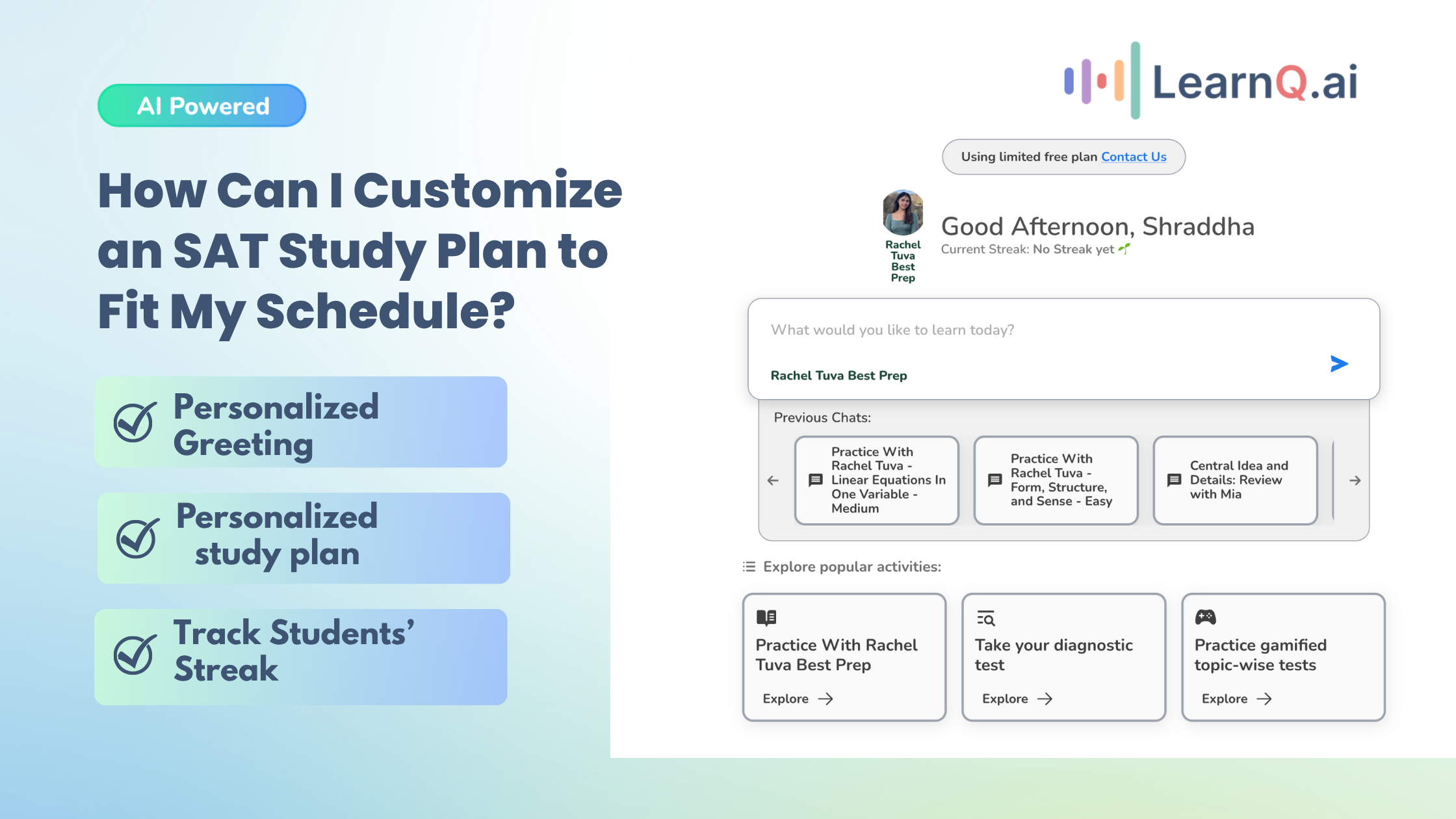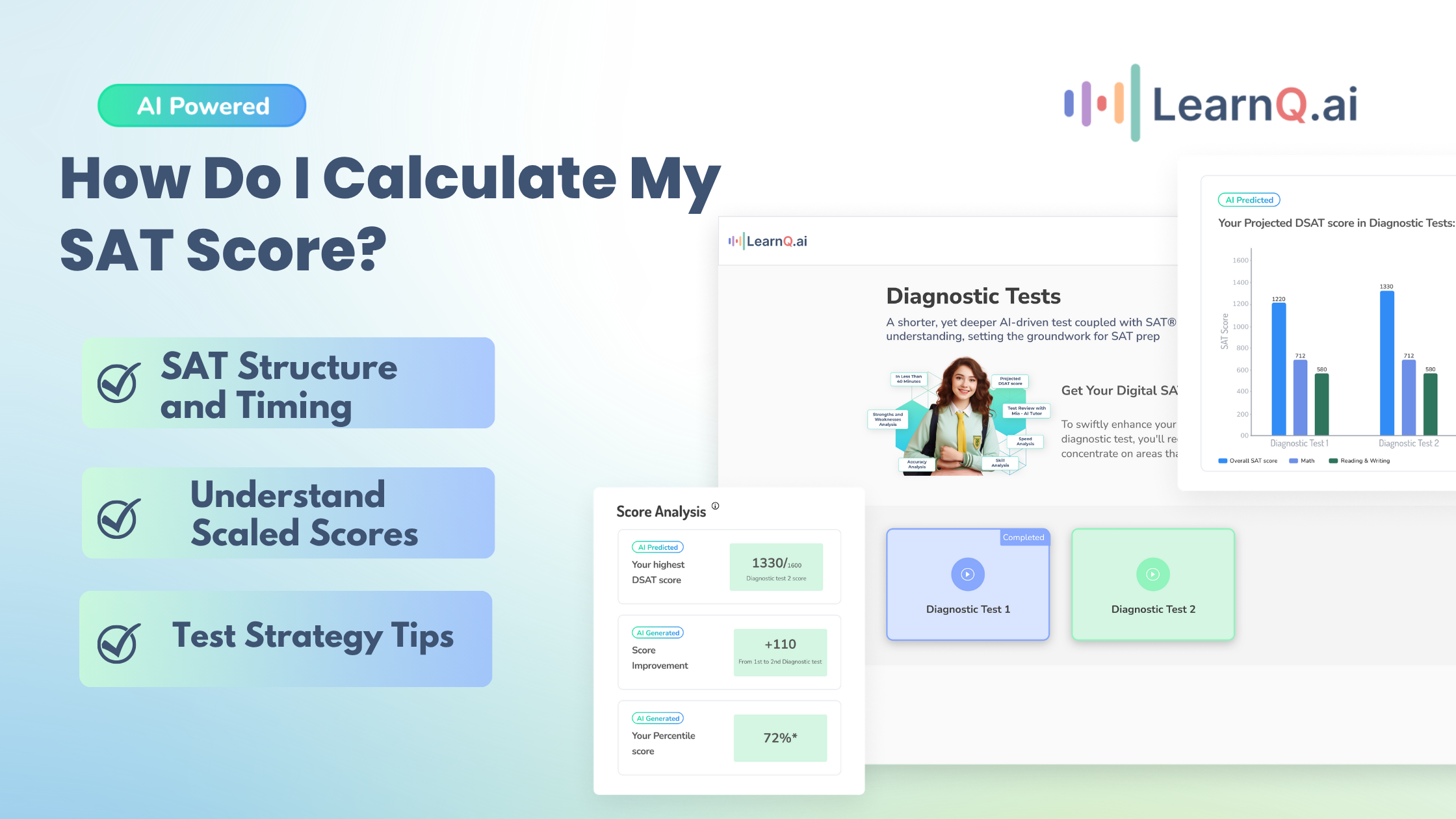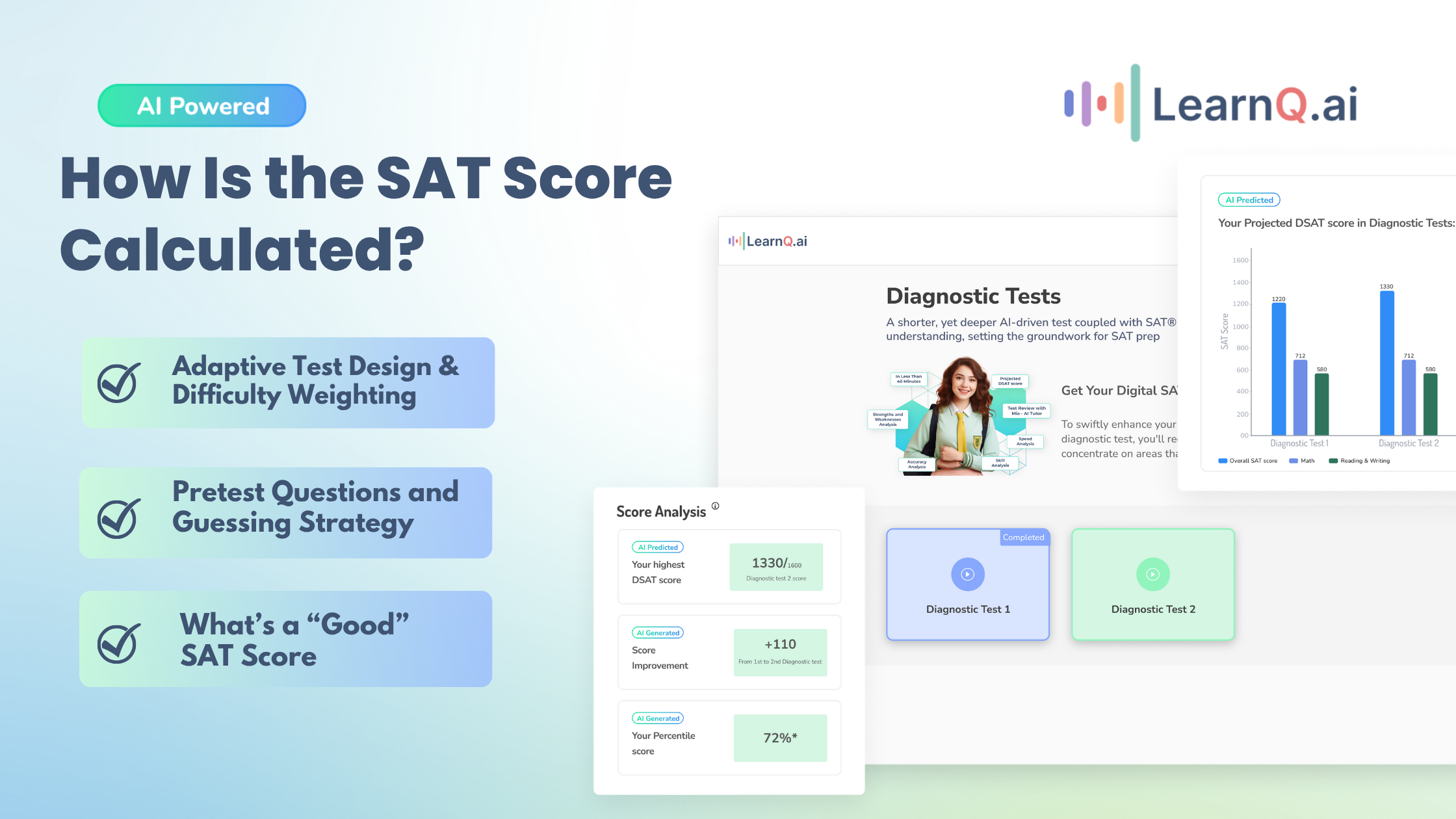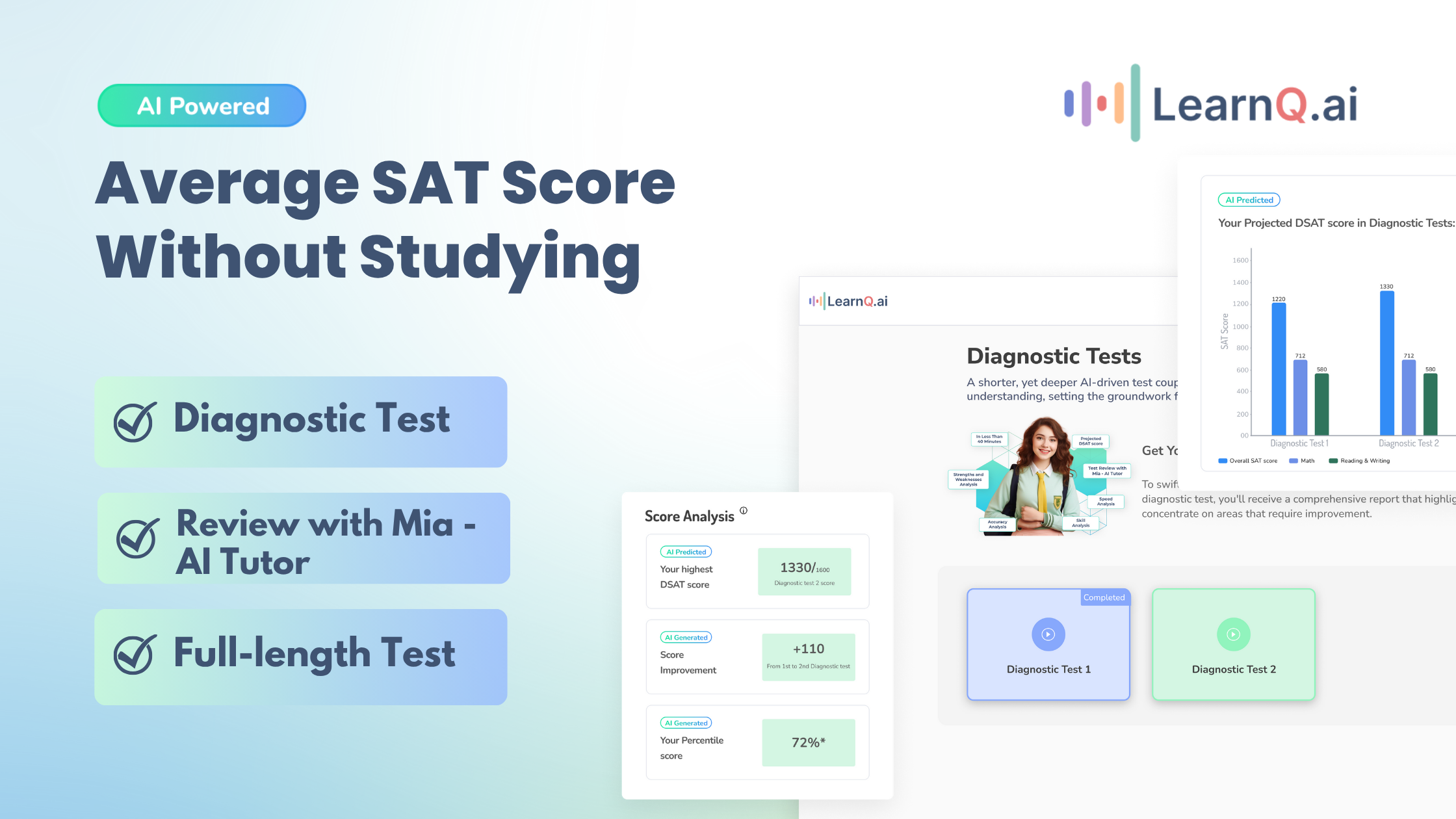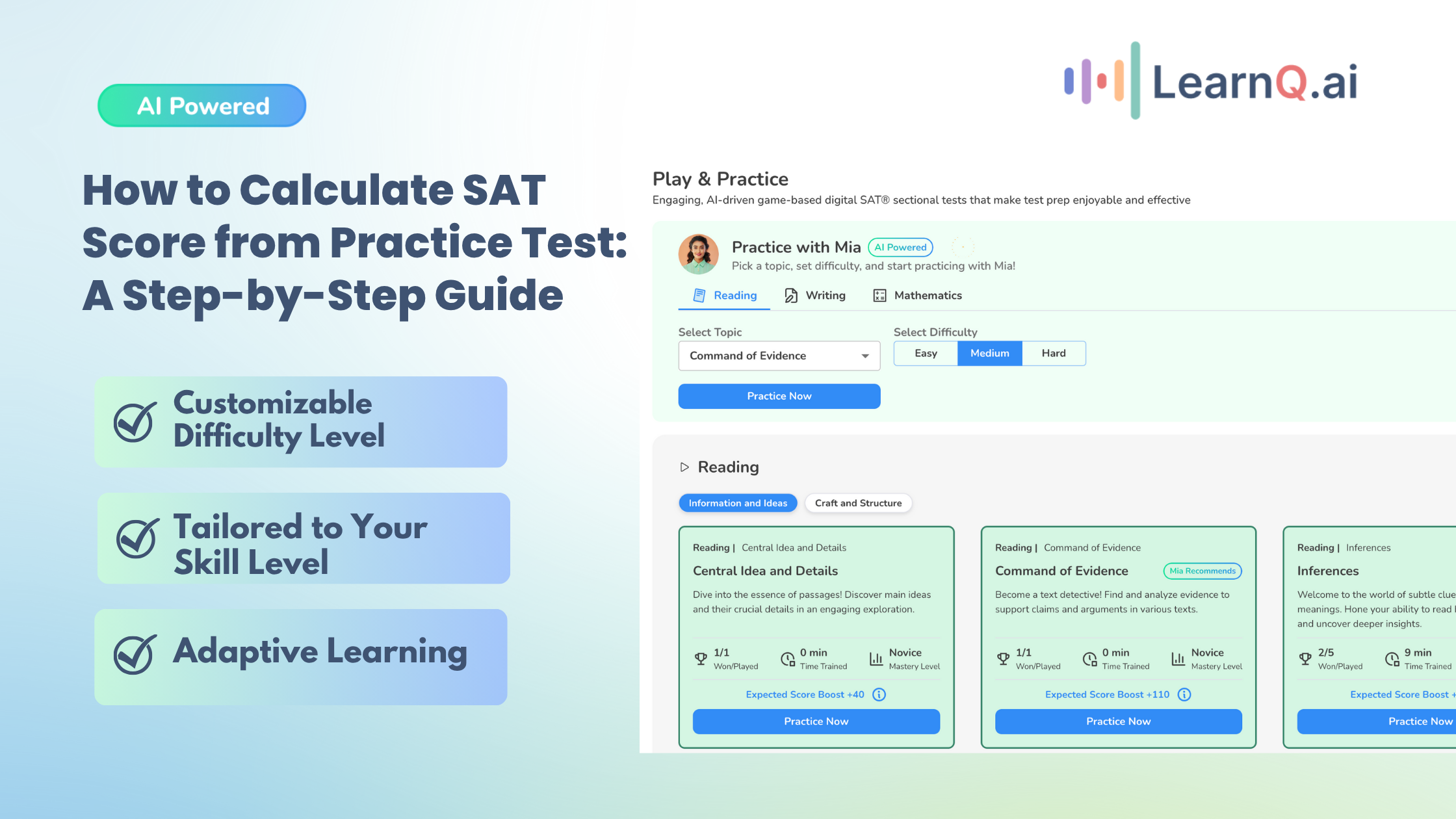Prepping for the SAT doesn’t have to be like trying to juggle flaming swords while riding a unicycle! Let’s turn test-day jitters into a confident victory lap.
Unlike your usual high school exams, the SAT’s timed format can be daunting. Feeling overwhelmed? Don’t sweat it! This guide will be your weapon against time pressure. We’ll break down the SAT’s structure and equip you with pacing strategies to turn test-day tension into triumph.
Understanding Time Constraints
Acing the Digital SAT demands more than just mastering content. The SAT test’s times and limited breaks add a new layer of challenge to students. Familiarizing yourself with the allocated time for each section is crucial. This awareness allows you to strategize your approach, ensuring you attempt all questions and avoid getting bogged down on any single one.
Time Management
While a strong understanding of the tested concepts is foundational, effective time management is equally important for SAT success. Mastering the art of time allocation lets you navigate the test efficiently, ensuring you dedicate enough time to each section and question without succumbing to pressure.
Practice Makes Perfect
Remember not to underestimate the power of replicating actual test conditions during practice sessions. Simulating the digital format, including the interface and time constraints, allows you to experience the test environment firsthand. This helps you build test-taking stamina, manage time effectively, and foster a sense of familiarity, reducing anxiety and boosting your confidence on test day.
LearnQ.ai is Powered by VEGA AI—Is your Institute Next?
Give students a Duolingo-style test-prep platform with Shopify-level customization for tutors and institutes.
Overview of the Digital SAT Duration
The SAT is like a choose-your-own-adventure story regarding time! Here’s the breakdown:
- No Essay: If you skip the optional essay, the whole test takes 3 or 3 hours and 15 minutes with breaks. This includes all the expected Reading, Writing, and Math sections.
- With Essay: Feeling like a wordsmith? Adding the essay bumps the test time to 3 and 50 minutes or 4 and 5 minutes with breaks.The important thing to remember is that the essay is optional. You can decide when you register for the SAT if you want to take it. Since not all colleges require it, check with the schools you’re interested in to see if they need you to write the essay.
Breakdown by section: Reading, Writing and Language, Math
| Section | Time Allotted in Minutes | Number of questions |
| Reading and Writing | 64 minutes(two 32-minute modules) | 54 |
| Maths | 70 minutes(two 35-minute modules) | 44 |
| Total | 134 minutes | 98 |
- Breaks: There’s a 10-minute break between the two sections.
The Digital SAT gives you a whopping 68% more time per question. This means you can focus on understanding the questions, strategize your answers, and feel less rushed during the test.
Scheduled Breaks and Their Strategic Use
While breaks are for catching your breath, avoid completely zoning out. Use this time strategically. Remember, these breaks are designed to keep you sharp, not lull you into a relaxed state that might make jumping back into the test hard.
- 10 minutes to Power Up Between Reading & Writing:
Don’t let the momentum fade! The first 10-minute break comes after the Reading section before diving into Writing. This is your chance to recharge. Get up, move around a bit, and grab a quick snack or sip of water. Rejuvenate your mind and body for the next round of questions.
- Second Break (Optional): 2 minutes
If you opt for the essay section, you’ll get a final 2-minute break after completing the math sections. Recharge during breaks by moving around, hydrating yourself, and going on short walks to help refocus your mind.
Stay hydrated with small sips of water, and if you feel a dip in energy, a quick snack can provide a boost. This short window allows you to use the restroom or collect your thoughts before tackling the essay prompt.
Effective SAT Practice Strategies
Here are the key strategies to maximize your score. Let’s dive in and transform your practice sessions into success stories!
1. Simulating actual test timing conditions during practice sessions
To get a feel for the Digital SAT format and question types, jump in with a full-length practice test. Find a quiet, well-lit room that mimics a test environment. Minimize distractions and stick to the time limits for each section, just like on the real exam. This will help you get accustomed to the pace and pressure of the actual SAT.
Once you’ve completed the practice test, it’s analysis time! Use your results to identify your strengths and weaknesses. Did you shine in Reading & Writing or conquer the Math sections? Beyond section scores, delve deeper into the specific question types where you excelled or stumbled. This will help you pinpoint areas needing more focus and where you can build on your existing skills.
Enhance your Digital SAT study routine with AI-driven insights and personalized practice tests.
2. Practice sessions to mimic test day conditions
Standardized test preparation hinges on using full-length practice tests that replicate the testing environment. Familiarity with the format and testing conditions fosters a sense of calmness on test day, mitigating anxiety and maximizing performance.
High-quality practice tests provide a valuable predictive tool for estimating your potential score with greater accuracy. This information empowers you to tailor your study plan, focusing on areas requiring the most improvement to optimize your results.
Utilizing digital SAT practice tests offers a distinct advantage for those preparing for the digital SAT. These tests expose you to the specific question types used in the Reading and Writing and digital SAT Math sections and the designated time allotment for each.
Most importantly, the digital format dynamically adapts to your skill level as you progress through each module, mirroring the actual test experience. This is where LearnQ.ai comes in with:
- Fully mimicked test application interface
- Added support tools: reference sheets, etc
- Adaptive sections based on performance
- Built-in timer
- Annotation tool for highlighting and notes
3. Practicing under timed conditions to improve time management skills
The Digital SAT Reading and Writing section is fast-paced, allotting just over a minute per question. Here are key strategies to maximize your score within this timeframe:
- Prioritize Speed on Easier Questions: Focus on breezing through questions you can answer quickly to save time for more challenging ones.
- Make Predictions: Develop an anticipated answer before reading the choices. Select the option that best aligns with your prediction to minimize time spent comparing answer choices.
- Eliminate Incorrect Answers: If an answer doesn’t match your prediction, systematically eliminate demonstrably wrong choices to narrow the selection.
- Trust Your Gut: Don’t overthink! Your initial instinct is often accurate, especially if you’ve practiced extensively.
- Review Marked Questions: After completing the module, revisit unclear questions using the “mark for review” function.
- Fill in Every Blank: There’s no penalty for incorrect answers, so always make an educated guess, even if you need to revisit the question later.
- Respect Module Time Limits: Take time with the second module during practice tests. Use any remaining time from the first module for review, just as you would on the test.
4. Focusing on accuracy and pacing over merely completing questions
The Digital SAT demands both challenging content knowledge and the ability to manage time effectively. Prioritize getting questions right over simply completing them all.
- Focus on strategic omissions: Stay calm on difficult questions. Skip them and come back if time allows. Make educated guesses for questions you can’t solve.
- Develop a pacing strategy: Treat the test like a marathon, not a sprint. Allocate time for each question type to avoid feeling rushed. Practice tests help refine your pacing.
- Prioritize comprehension: Rushing through questions leads to mistakes. Read carefully, understand what’s being asked, and analyze answer choices before selecting the best one.
- Utilize the review function: Review marked questions during breaks or at the end of sections to double-check answers and improve your score.
- Practice makes perfect: Take official practice tests under timed conditions. This builds content familiarity and hone your pacing skills. Analyze your mistakes to identify areas for improvement.
Remember, the key to success on the Digital SAT is strategic thinking and getting the most questions correct, not just finishing them all.
Preparing for the Digital SAT Test Day
The Digital SAT day is fast approaching! Don’t fret. Conquer your nerves with these essential tips: ensure a good night’s sleep, pack strategically, and arrive early with a calm and focused mindset. Let’s turn test-day jitters into triumphs!
The Night Before Your SAT: Relax and Be Prepared
The night before your SAT, focus on getting a good night’s sleep and being organized for the next day. Here are some simple tips:
- Skip the Last-Minute Cramming: Don’t try to study a ton right before the test. Rest your brain instead – cramming won’t help you remember more.
- Check for Test Center Closures: Make sure your test center is open. The College Board website has a list of centers.
- Pack Your Bag: Get your backpack ready with everything you need for the test, like your ID, pencils, and admission ticket. This will save you time and stress in the morning.
- Aim for a Good Night’s Sleep: You should get at least 8 hours of sleep to feel refreshed and focused during the test.
The Morning of Your SAT: Stay Calm and Focused
Start your test day off right by following these simple steps:
- Eat a Healthy Breakfast: Fuel your brain with protein, carbs, and healthy fats. Oatmeal, yogurt with fruit, or eggs with toast are all good choices. Remember to drink water!
- Stick to Your Routine: To feel calm in the morning, do what you usually do. For example, if you have a coffee and walk your dog, keep that routine.
- Dress Comfortably: Wear loose-fitting clothes you feel good in.
- Leave early for the Test: Aim to arrive at least 15 minutes before the test starts. This gives you time for traffic and finding the testing location. Don’t be late—they might not let you take the test!

What to Bring?
- Admission ticket: Print a copy or make it available on your device.
- Valid ID: A government-issued photo ID is required.
SAT – Exam Schedule
- 7:45 a.m.: Test center doors open to students.
- 8 a.m.: Test center doors close.
- 8:15–8:30 a.m.: Testing starts.
- 10:45–11 a.m.: Standard time testing ends.
- Noon–12: 15 p.m.: Time and one-half testing ends.
- 1–1:15 p.m.: Double time testing ends.
Digital SAT Test Day Don’ts:
- Prohibited Items: Leave electronics (except your testing device), books, notes, or any unauthorized aids at home. Avoid clothing or accessories that give an unfair advantage.
- Cheating: Don’t copy, share, or discuss test content. Refrain from using unauthorized materials or accessing external resources.
- Disruptions: Maintain a quiet and respectful environment. Avoid talking, making noise, or behaving inappropriately.
- Early Departure: Only leave with permission from the test staff. Don’t remove materials or take pictures/recordings.
Digital SAT Test Day Procedures:
- Arrive Early (45 minutes): Allow ample time for check-in and settling in.
- Check for Delays: Confirm your test center is open using the College Board website.
- Feeling Sick? Reschedule: Avoid spreading illness and contact the College Board for a refund or reschedule.
- Follow Test Staff Instructions: They’ll verify your ID and device, collect prohibited items, and guide you through the process.
- Bluebook App: Log in using your College Board account and wait for the test to begin.
- Take the Test: Follow instructions, utilize Bluebook features, and manage your time effectively.
Consequences of Violations:
Violating testing rules can lead to serious repercussions, including:
- Canceled or invalidated scores
- Dismissal from the test center without a refund
- Ban from future College Board tests
- Potential legal action
Please read through our Blog on the Digital SAT checklist for further information
Use our test day checklist as a reminder for everything you need. Remember, the proctor will hold your electronic devices until the test ends.
LearnQ.ai is powered by VEGA AI—Is your institute next?
Offer students a Duolingo-style test-prep platform with Shopify-level customization for tutors and institutes.






Conclusion
We’ve emphasized the importance of time management and understanding the SAT’s time structure for a reason – they’re crucial for success! By strategically using the time allotted for each section and question, you can maximize your focus and minimize stress during the exam.
The key lies in practice. Make full use of official SAT practice tests to get comfortable with the real exam’s timing. Simulate the test environment as closely as possible, including sticking to the time limits for each section and module. This will help you develop a pacing strategy that allows you to answer as many questions as possible while still ensuring accuracy.
Remember, strategic break use plays a vital role, too. Don’t just use breaks for relaxation. Use them to recharge and refocus. Take a few deep breaths, stretch lightly, and quickly review flagged questions. Maximizing your in-test and break time will enable you to conquer the timed SAT and achieve your desired score.
LearnQ.ai’s platform is designed to help you master the digital format, conquer time constraints, and solve questions strategically. Contact us to discover how we can transform your test prep and unlock your top score potential!


